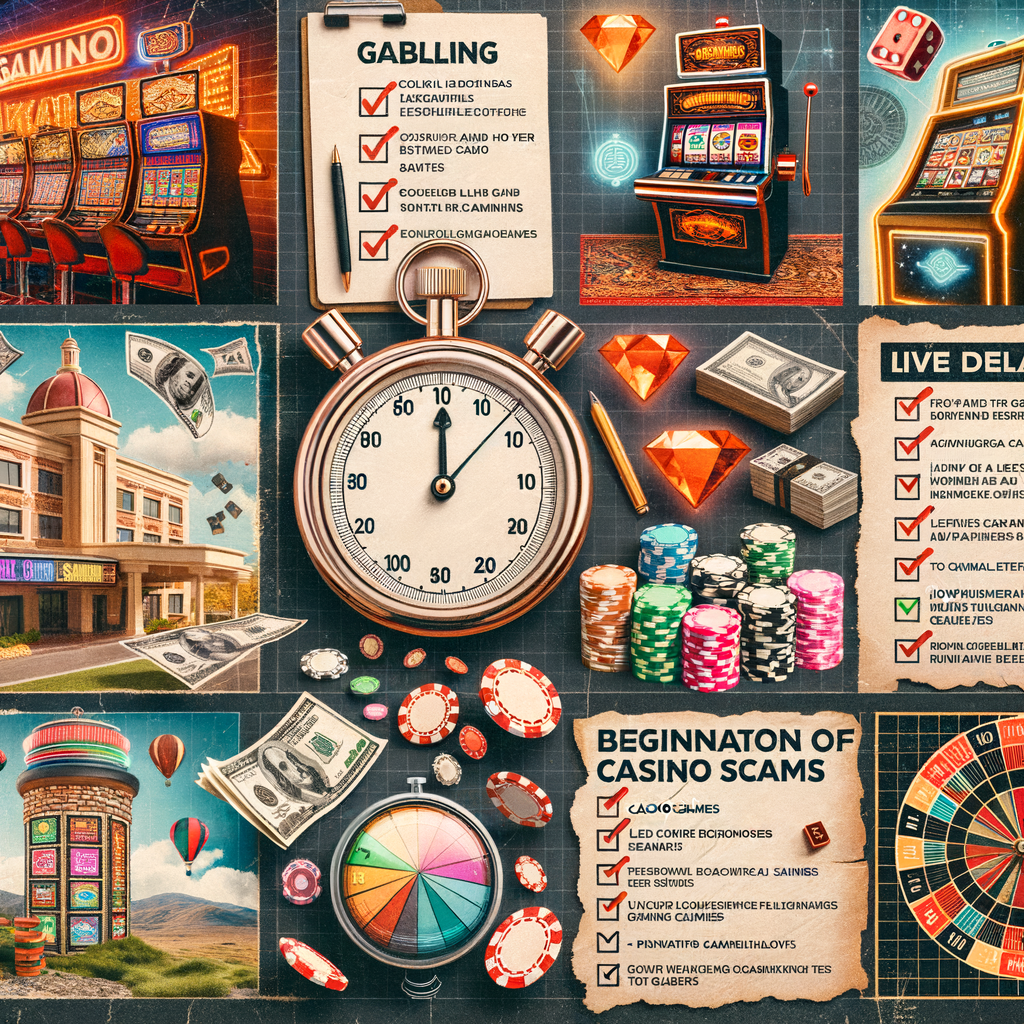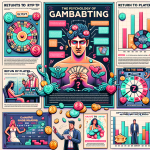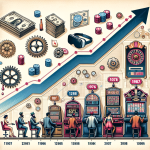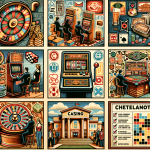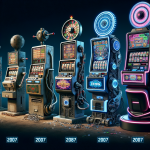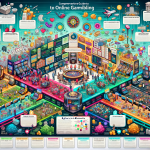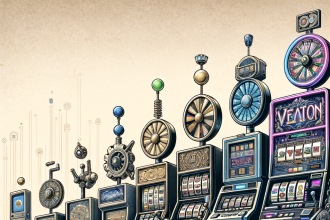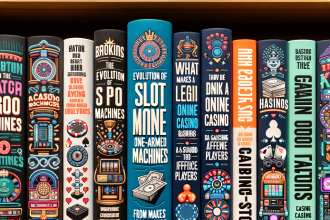Casinos are not merely venues for gambling; they are meticulously designed environments that aim to enhance the player’s experience and encourage longer stays and greater spending. Within these spaces, color, sound, and overall design are not random choices but strategic elements grounded in psychology. Understanding how these elements work provides insight into why casinos are often described as “immersive” experiences. This article will explore the psychological impact of color in casino design and how audio enhances the gaming experience, demonstrating the calculated methods casinos employ to influence player behavior.
The Psychological Impact of Color in Casino Design
Understanding Color Psychology
Color plays a pivotal role in shaping emotions, perceptions, and behaviors. In the context of casino design, colors are carefully selected to evoke specific feelings that may lead to increased spending. For instance, warmer tones like red and yellow are known to stimulate excitement and appetite, while cooler tones like blue can create a calming effect.
- Red: Often associated with passion and energy, red is frequently used to catch a player’s attention. This bold color is often found near entryways or on prominent signage.
- Gold: Symbolizing wealth and success, gold is commonly used in gaming areas to create an atmosphere of luxury and aspiration.
- Green: Known to evoke feelings of balance and tranquility, green is often utilized on poker tables and in areas designed for relaxation.
The Use of Color in Specific Areas
Casinos often employ color strategically throughout various zones to elicit desired emotional responses. Each area serves a distinct purpose, and colors are matched accordingly:
| Area | Color | Psychological Impact |
|---|---|---|
| Entrance | Red | Energizing, attention-grabbing |
| Gaming Floors | Gold | Luxurious, aspirational |
| Relaxation Zones | Green | Calming, soothing |
- Game Areas: Vibrant colors are prevalent in gaming areas, enticing players to engage with slot machines and card tables. The high contrast between colors on machines is designed to draw the eye and maintain enthusiasm.
- Dining Areas: In contrast, dining areas often feature softer hues to create a relaxing environment where players can unwind and recharge before returning to the gaming floor.
The Role of Lighting and Color
Lighting amplifies the effects of color in casino design. Casino interiors are typically illuminated with dynamic lighting that enhances the visual appeal of color schemes. Bright lights are often used to highlight key features, such as game tables and cashiers, while softer lighting may be employed in lounge areas to foster relaxation.
- Flashing Lights: The combination of color and light creates a spectacle that stimulates excitement and engagement. For example, when a slot machine hits the jackpot, the flashing lights coupled with colorful displays amplify the thrill of winning.
- Mood Alterations: Research suggests that certain lighting conditions can influence mood and behavior. Brighter, more vibrant colors can enhance alertness and excitement, whereas darker, softer colors may encourage relaxed social interaction.
Soundscapes: How Audio Enhances the Gaming Experience
The Impact of Sound on Player Behavior
Just as color affects mood, sound has a profound impact on player behavior in casinos. The auditory environment is crafted to create an immersive experience that encourages players to stay longer and gamble more. Studies show that certain sounds can evoke emotional responses, reinforcing positive experiences associated with winning and play.
- Winning Sounds: The celebratory jingles and sound effects associated with winning—like the ringing of bells or triumphant music—serve to reinforce positive behavior. These sounds create a sense of satisfaction and encourage players to continue gambling.
- Background Noise: Casinos often employ sounds of chatter, laughter, and clinking coins to create a vibrant atmosphere. This background noise can enhance feelings of camaraderie and excitement, encouraging players to engage more deeply with the environment.
Designing an Effective Soundscape
Casinos carefully curate their audio environments to maximize player engagement. The design of a casino’s soundscape involves several key elements:
- Volume Control: Sounds are carefully balanced to ensure that the ambient noise level is stimulating but not overwhelming. This creates an inviting atmosphere where players feel comfortable.
- Music Selection: Many casinos play upbeat music at a moderate volume to maintain energy levels. The tempo and style of music can influence players’ emotions and decision-making processes.
- Sound Effects: The use of distinct sound effects on slot machines and table games serves to draw players in. These sounds are strategically timed to coincide with moments of excitement or anticipation.
The Psychological Effects of Sound
Casinos leverage sound design not only to enhance the player experience but also to manipulate player behavior. For instance, studies have shown that:
- Faster Beats: Music with a faster tempo can encourage quicker decision-making, which may lead to increased bets and faster play.
- Consistent Noise: A continuous background of noises, like the sound of chips being shuffled or cards being dealt, keeps players engaged and focused on the game.
This orchestration of sound creates a subconscious association between the audio cues and positive experiences, such as winning or social interaction.
Conclusion
In conclusion, the strategic use of color, sound, and overall design in casinos plays a crucial role in shaping the player experience. By understanding the psychological impacts of these elements, we can see how casinos create immersive environments that encourage extended play and increased spending. Color influences emotions and perceptions, while soundscapes enhance engagement and foster a sense of community. As players navigate through these carefully crafted spaces, they become susceptible to the myriad of influences designed to heighten their gaming experiences, ultimately making casinos not just places to gamble but environments that encapsulate the thrill of possibility.
